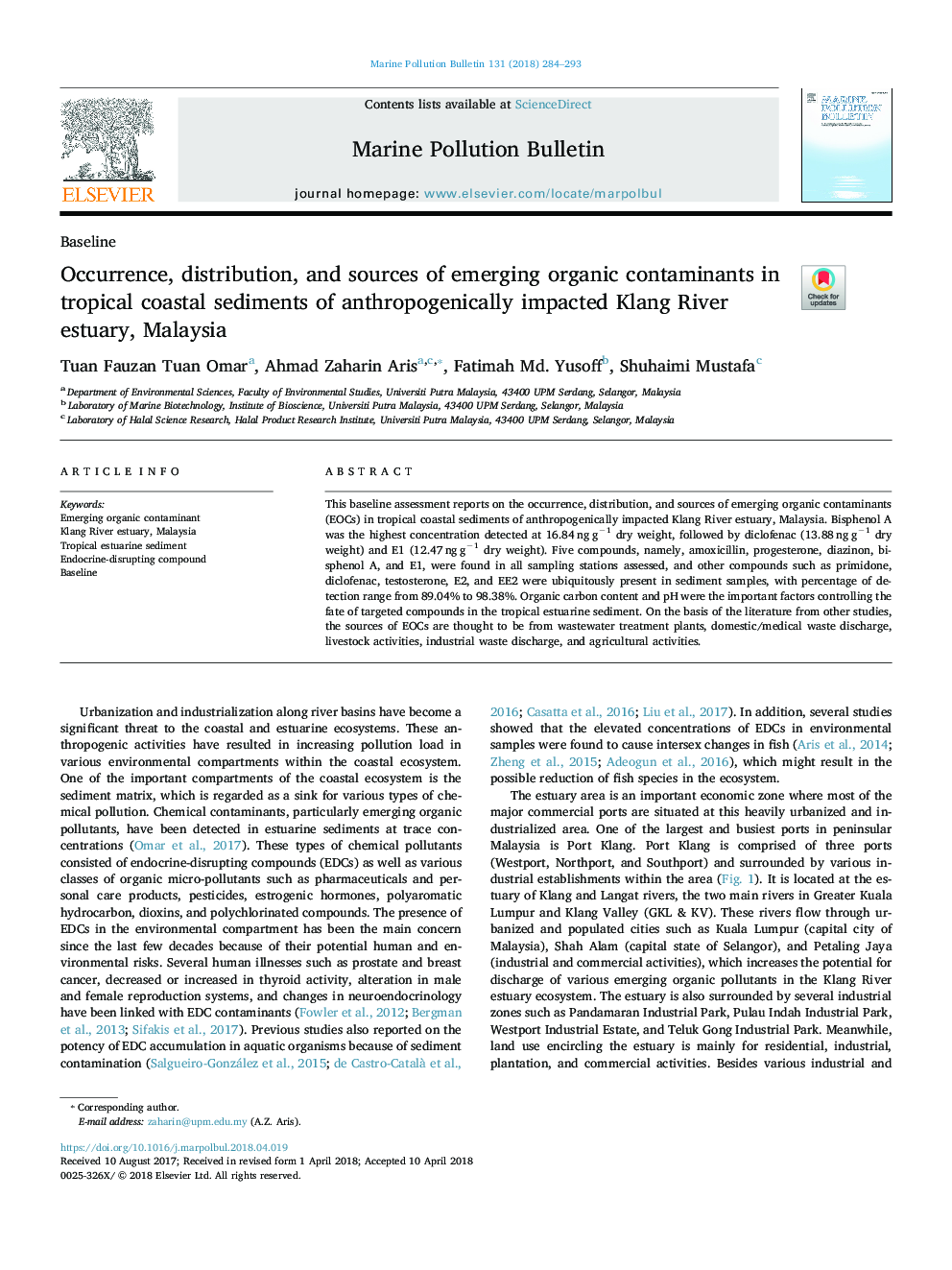| Article ID | Journal | Published Year | Pages | File Type |
|---|---|---|---|---|
| 8871121 | Marine Pollution Bulletin | 2018 | 10 Pages |
Abstract
This baseline assessment reports on the occurrence, distribution, and sources of emerging organic contaminants (EOCs) in tropical coastal sediments of anthropogenically impacted Klang River estuary, Malaysia. Bisphenol A was the highest concentration detected at 16.84â¯ngâ¯gâ1 dry weight, followed by diclofenac (13.88â¯ngâ¯gâ1 dry weight) and E1 (12.47â¯ngâ¯gâ1 dry weight). Five compounds, namely, amoxicillin, progesterone, diazinon, bisphenol A, and E1, were found in all sampling stations assessed, and other compounds such as primidone, diclofenac, testosterone, E2, and EE2 were ubiquitously present in sediment samples, with percentage of detection range from 89.04% to 98.38%. Organic carbon content and pH were the important factors controlling the fate of targeted compounds in the tropical estuarine sediment. On the basis of the literature from other studies, the sources of EOCs are thought to be from wastewater treatment plants, domestic/medical waste discharge, livestock activities, industrial waste discharge, and agricultural activities.
Related Topics
Physical Sciences and Engineering
Earth and Planetary Sciences
Oceanography
Authors
Tuan Fauzan Tuan Omar, Ahmad Zaharin Aris, Fatimah Md. Yusoff, Shuhaimi Mustafa,
